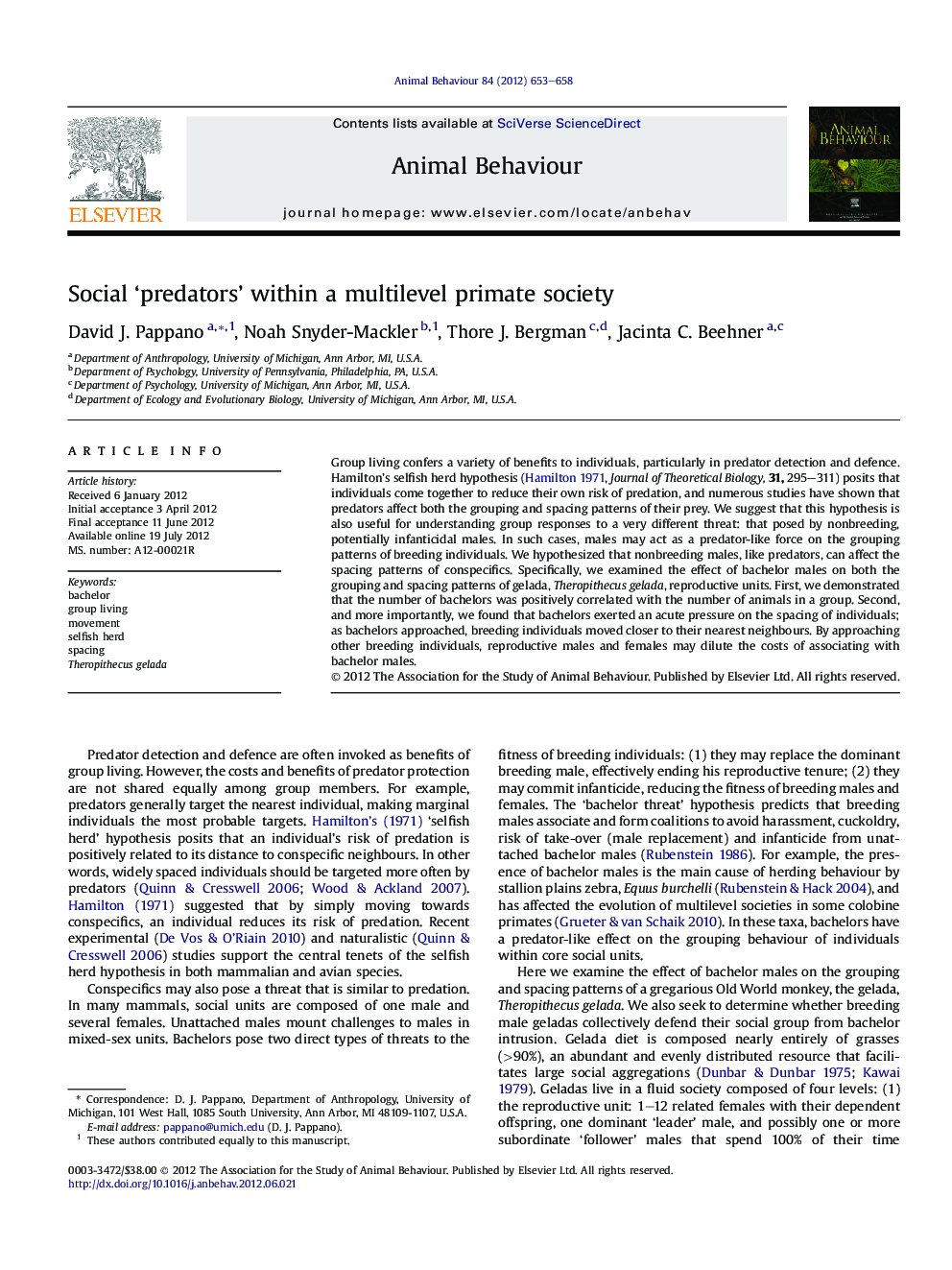| Article ID | Journal | Published Year | Pages | File Type |
|---|---|---|---|---|
| 2416839 | Animal Behaviour | 2012 | 6 Pages |
Group living confers a variety of benefits to individuals, particularly in predator detection and defence. Hamilton's selfish herd hypothesis (Hamilton 1971, Journal of Theoretical Biology,31, 295–311) posits that individuals come together to reduce their own risk of predation, and numerous studies have shown that predators affect both the grouping and spacing patterns of their prey. We suggest that this hypothesis is also useful for understanding group responses to a very different threat: that posed by nonbreeding, potentially infanticidal males. In such cases, males may act as a predator-like force on the grouping patterns of breeding individuals. We hypothesized that nonbreeding males, like predators, can affect the spacing patterns of conspecifics. Specifically, we examined the effect of bachelor males on both the grouping and spacing patterns of gelada, Theropithecus gelada, reproductive units. First, we demonstrated that the number of bachelors was positively correlated with the number of animals in a group. Second, and more importantly, we found that bachelors exerted an acute pressure on the spacing of individuals; as bachelors approached, breeding individuals moved closer to their nearest neighbours. By approaching other breeding individuals, reproductive males and females may dilute the costs of associating with bachelor males.
► We applied Hamilton's ‘selfish herd’ hypothesis to conspecific ‘social predators’. ► Bachelor geladas, Theropithecus gelada, affected grouping patterns of breeding units. ► More bachelors were associated with larger herds of geladas. ► As bachelors approached, breeding individuals and units clumped together.
